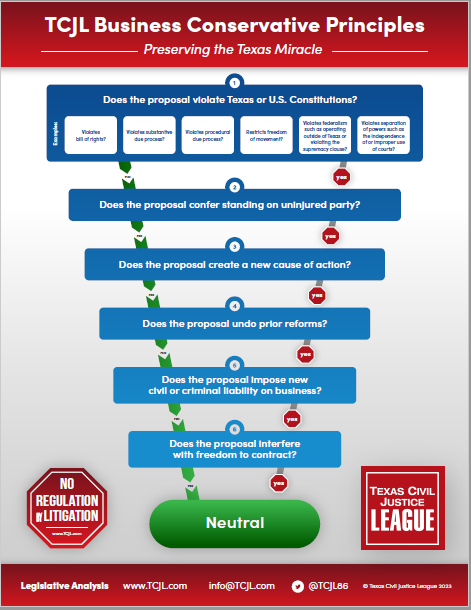 In a case we reported last October, the Texas Supreme Court has affirmed a Houston [1st] Court of Appeals determination that a claim against the physician based on the physician’s letter regarding the suitability of a pit bull as a service animal was not a health care liability claim.
In a case we reported last October, the Texas Supreme Court has affirmed a Houston [1st] Court of Appeals determination that a claim against the physician based on the physician’s letter regarding the suitability of a pit bull as a service animal was not a health care liability claim.
Maurice N. Leibman, M.D. v. Cleveratta Waldroup and James Waldroup, Individually and As Next Friends of R.W., a Minor (No. 23-0317; June 6, 2025) arose from serious injuries to a child sustained when a pit bull attacked her in a restaurant. The dog, which was wearing a “service dog” vest, belonged to a restaurant patron. The child’s parents sued the owner, but they also asserted claims for negligence and aiding and abetting against the dog owner’s gynecologist, who had written letters on behalf of the pet owner alleging that she needed the animal for her generalized anxiety disorder. Among other things, the pet owner used the letter to avoid eviction.
It’s worth noting at this point that no government licensing, registration, or certification of service animals exists at the federal or state level, and that registering service animals is not required by law (although there are numerous private websites that offer “registration”). Here’s what the Texas Workforce Commission has to say about them: “Service animals are typically dogs specially trained or equipped to help individuals with disabilities. There is no government licensing, registration, or certification of service animals. Registering service animals is not required by law. Service animals are not pets and should not be treated as such. An animal that provides only comfort or emotional support is not considered a service animal. You may use a service animal with protection under state and federal law only if you are a person with any of the following disabilities:
- Mental health disorder
- Physical disabilities
- Mobility impairment.
- Intellectual or developmental disability
- Hearing loss, including the deaf, hard of hearing, and deafblind
- Communication disorder
- Visual impairment, including the blind and those with low vision
- Post-traumatic stress disorder
- Any other condition that requires special ambulatory devices or services.”
The gynecologist moved to dismiss the parents’ claims against him for failure to serve an expert report under Chapter 74. The trial court denied the motion, and the court of appeal affirmed. The court of appeals held that the claims were not health care liability claims because: (1) the parents’ claims were not inseparable from the practice of health care, (2) the physician did not present any evidence that the letter, which was specifically directed to helping the dog owner avoid eviction, provided any health care (though the physician argued that the letter was an “instrument” of health care), and (3) there were no safety standards or other standard of care that could be identified to invoke Chapter 74. The parents argued further that the physician waived his right to seek dismissal under Chapter 74, but the court of appeals did not reach this issue. The gynecologist petitioned for review, which SCOTX granted.
In an opinion by Justice Busby, joined by Justices Lehrmann, Boyd, Devine, and Young, SCOTX affirmed. As a preliminary matter, the Court had to decide whether Plaintiffs had standing to sue the gynecologist. The issue here was whether the injury was “fairly traceable,” or causally connected, to the gynecologist’s conduct, that is, writing letters regarding a patient’s need for a pit bull service animal. The majority “narrowly” concluded that Plaintiffs sufficiently alleged that their child’s injuries were fairly traceable to the letters. Plaintiffs argue contended that the gynecologist misrepresented the pit bull as a trained “service animal” without verifying the training, and that omission “proximately causes, aided and abetted, or contributed to the incident that caused” the child’s injuries. At this stage of the litigation, it wasn’t necessary for Plaintiffs to prove but-for causation, only a “reasonable inference.” Whether Plaintiffs can provide causation is for the merits stage to determine.
Now to the central issue of whether Plaintiffs’ claims constitute health care liability claims under Chapter 74, CPRC. Plaintiffs argued that they weren’t “because they are not based on any ‘claimed departure from accepted standards of medical care’” applicable to the facts of this case. To decide this question, the Court had to decide “whether a medical expert is ‘needed to establish the requisite standard of care,’ its breach, and causation.” If it’s not, the Court must consider “the totality of the circumstances” to determine whether Chapter 74 applies. As Justice Busby pointed out, “[n]o party asserts that medical expert testimony would have any relevance” to Plaintiffs’ causation theory, which goes to whether the gynecologist was negligent because he didn’t verify the certification of a dog he represented as certified (nor did the restaurant staff, for that matter, who didn’t ask the dog’s owner for the dog’s “papers”). The gynecologist argued that only another gynecologist could testify as to his negligence in diagnosing and treating generalized anxiety disorder with a service animal. But Plaintiffs didn’t argue that the gynecologist was negligent in diagnosing the dog’s owner or suggesting treatment with a service animal. Here a medical expert was not needed to “prove or refute an applicable standard of care and breach” because the issue was whether the physician knew or should have known that the dog was dangerous. Maybe a veterinarian or dog trainer could do that, but not a gynecologist. Under the totality of the circumstances test, then, “we see nothing else to indicate that an expert report from a physician would assist the trier of fact in deciding any disputed factual question.”
Justice Huddle, joined by Chief Justice Blacklock and Justices Bland and Sullivan, dissented. She would have held that the outcome was controlled by Loaisiga v. Cerda, 379 S.W.3d 248, 256 (Tex. 2012), which held that “when a negligence claim against a physician is inseparably intertwined with health-related services, it is a health care liability claim” (citations omitted). She charged the majority with departing from its precedents “and welcomes artful pleading to avoid the Act’s application.” Looking to the underlying nature of the claim (in other words, cutting through artful pleading), the dissenters contended that Plaintiffs’ claims against the gynecologist could not stand alone as ordinary negligence claims because they were based on his diagnosis and treatment of the dog owner in the first place. “When a claim is premised on facts that do, or even could, support an HCLC,” Justice Huddle wrote, “that claim is an HCLC, regardless of the pleading’s specific allegations.” Additionally, the Court has always construed Chapter 74 broadly to create a presumption that a claim against a physician is an HCLC. Here there would be no case against the physician if he hadn’t treated the dog owner in this particular way. That’s gets over the line. Plaintiffs never rebutted the presumption nor produced an expert report, so the case should be dismissed. “The gravaman of the [Plaintiffs’] claim,” she concluded,” is that a physician in the course of providing medical care to a patient for general anxiety disorder committed negligence by making statements he allegedly was not qualified to make.”
It is interesting to note that the Court unanimously thought that Plaintiffs got over the standing threshold. That’s a really close call that could go either way. It struck us, though, when we read the court of appeals’ opinion that the physician’s letters were never shown to anybody at the restaurant, so how would anyone know that a dog wearing a vest was too dangerous to go out in public? And how could the physician have known that to begin with? The dog was certified (though as we noted above, this may or may not mean anything). Unless he’s an expert in animal behavior, how could he possibly have gone behind what the owner gave him? There are so many ifs, buts, and neverthelesses in this case that we’re not entirely sure the decision can really be applied to any other set of facts. This looks like an outlier produced at least in part by the horrible nature of the vicious attack on the child with no one to hold accountable for it.












